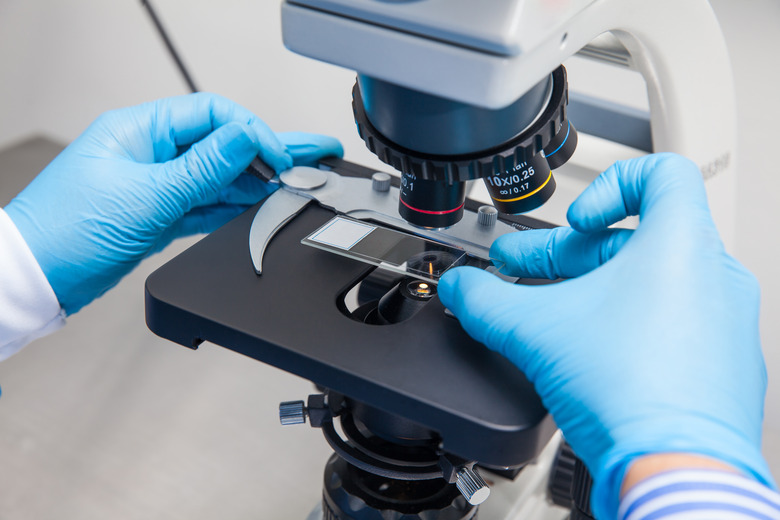What Organelles Are In A Prokaryotic Cell?
Living things consist of cells, and cells come in numerous types relating to the overall level of complexity of the organisms in which they are found. Archaea (blue-green algae, for example) and bacteria such as E. coli contain prokaryotic cells, while the more complex members of the Eukaryota domain contain eukaryotic cells.
The main difference between prokaryotic cells and eukaryotic cells is that the former do not contain a membrane-bound nucleus. The word "prokaryote" is derived from Greek words that mean "before nucleus." Prokaryotic cells contain fewer organelles or functional components than do eukaryotic cells. Their four main structures are the plasma membrane, cytoplasm, ribosomes and genetic material (DNA and RNA).
Cell Wall
Cell Wall
While some eukaryotic cells have cell walls, such as those in plants and fungi, almost all prokaryotic cells have them, and they are chemically distinct from those of eukaryotes. The walls give the organism stability, protection and its overall shape. The walls of bacteria consist of substances called peptidoglycans. Some prokaryotes have an outer capsule outside the cell wall, resulting in three layers from outside to inside: capsule, wall and membrane. Certain antibiotics, including penicillin drugs, target the cell walls of bacteria.
Cell Membrane
Cell Membrane
The cell membrane, which is common to all living things, consists of a structure called a phospholipid bilayer. It is so named because it includes two layers, each containing hydrophilic, or water-soluble, phosphate "heads" that face away from the middle of the membrane and hydrophobic "tails" that are not water soluble and face each other on the interior of the double layer. The membrane is selectively permeable, meaning that some substances may pass through, often with the help of protein "motors" embedded in the membrane but at other times via simple diffusion.
Cytoplasm
Cytoplasm
Also called the cytosol, the cytoplasm of a cell is a gel-like substance consisting predominantly of water. It also contains enzymes, salts, an assortment of organic molecules and the cell's organelles. In this medium, a number of chemical reactions can take place. If you imagine a water balloon filled with a mixture of water and shaving cream being a cell, the rubber represents the cell wall and cell membrane and the water and shaving cream, in which other organelles are found, represents the cytoplasm.
Ribosomes
Ribosomes
Ribosomes are organelles responsible for protein synthesis, a process that every cell must undertake to ensure the survival of the organism, whatever its overall size, shape and function. Each ribosome consists of a large subunit and a small subunit, both of which include ribosomal RNA (rRNA) and proteins. In protein synthesis, messenger RNA (mRNA) moves through the ribosome like a conveyor belt, while amino acids attached to transfer RNA (tRNA) are carried to the ribosome. The amino acids are then attached to assemble the complete protein.
Cite This Article
MLA
Beck, Kevin. "What Organelles Are In A Prokaryotic Cell?" sciencing.com, https://www.sciencing.com/organelles-prokaryotic-cell-8531856/. 11 July 2019.
APA
Beck, Kevin. (2019, July 11). What Organelles Are In A Prokaryotic Cell?. sciencing.com. Retrieved from https://www.sciencing.com/organelles-prokaryotic-cell-8531856/
Chicago
Beck, Kevin. What Organelles Are In A Prokaryotic Cell? last modified March 24, 2022. https://www.sciencing.com/organelles-prokaryotic-cell-8531856/
